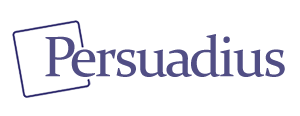A recent study about the best use of litigation graphics during trial reveals some new insights. This study was conducted by Persuasion Strategies, a litigation consulting firm that is part of Holland & Hart, a law firm. The study team was led by Ken Broda-Bahm, a leader in the art of visual presentation in the courtroom. With a doctorate in speech communication that emphasizes rhetoric and legal communication, Dr. Broda-Bahm is a genuine expert in jury consulting.
The Litigation Consulting Report
Because maps are used by jurors constantly in their daily life and because they are so frequently used to represent common locations and processes, they are one of the most frequently used and most effective types of demonstrative evidence. Whenever something can be conveyed geographically, through the use of space, it is worth considering the use of a map. Even though maps don’t always represent the highest and newest technology, their importance cannot be underestimated. In the words of Ray Moses of the Center for Criminal Justice Advocacy, which was formed in Texas as a grass-roots training resource to help new lawyers in becoming competent criminal trial practitioners: “Visuals (graphics) such as time lines, charts, illustrations, maps, etc. are sufficiently important to communicating your message that you owe it to your client and yourself to learn how to incorporate visuals into your presentation.”
Share:
In most trial presentations, the trial timeline is often the single most critical demonstrative exhibit used at trial. Much like an effective opening statement, the trial timeline: Orients the viewer; Provides a framework around which facts can be organized; Allows for easy comparison of events occurring in sequence or simultaneously; Builds trust and credibility by sharing a believable story; and even persuades when built correctly.
Share:
We often hear from clients or prospective clients that it won’t help them if they look like a big company that is attempting to overwhelm or dazzle its opponents with technology. Jurors won’t buy that sort of stuff, we are told, even from a litigant that is actually a large company.
Share:
Pharmaceutical companies can be embroiled in many types of litigation. Very often, because of the length of time and the tremendous investment of money that it takes to develop a new drug and bring it to market, these cases can be crucial to the company’s continuing financial health.
Share:
Litigation involving architecture usually involves some failure in the construction process, a dispute over lease terms like sight lines or common areas, an insurance claim involving an allegedly negligent design, or the responsibility for a building damaged in a natural disaster. Since most jurors are familiar with architecture to some degree, what usually has to be explained is the legal meaning of seemingly everyday terms, the process of design and construction, or the common customs of the architectural and construction businesses. That's where legal graphics often enter the picture.
Share:
White-collar criminal litigation is one area in which practitioners have not been as quick to adopt the use of litigation graphics as in other litigation areas such as intellectual property, environmental litigation, or products liability.
Share:
Explaining the Value of Litigation Consulting to In-House Counsel
Because of the continuing high value to society of minerals that are mined from the earth, mining litigation, when it occurs, often involves very high stakes. This is all the more true in our high-tech era, in which a wide variety of minerals have found new, very valuable uses in cutting-edge scientific and industrial applications.
Share:
Expert witnesses can be an extremely valuable portion of your case. If they are well-prepared, convincing and convey a clear, uncomplicated message to the jury, their testimony can lead directly to a verdict in your favor. If they are unconvincing and don’t communicate well, they are at best useless and at worst damaging to the case. The essential problem is that expert witnesses – whether they are testifying on engineering, scientific, financial, or other issues – tend to be very intelligent and knowledgeable. At the same time, however, they are prone to using terms that are well above the jury’s experience and educational levels and thus these experts are prone to be dismissed by some jurors as ivory-tower types who have nothing useful to say. We believe our firm plays several important roles helping expert witnesses get prepped for trial. Since our goal is winning by telling a clear and convincing story, the value of expert testimony must be maximized in each case. Expert witnesses are an essential piece of the litigation persuasion puzzle. Here are our seven tips for preparing expert witnesses and expert testimony to the best effect possible:
Share:
Trademark cases are one type of case that lends itself well to the use of graphics. That may seem obvious since in most such cases, the object under dispute is a trademark – something that is itself often an item of graphic design, or at the very least a word or phrase that is easy to visualize. So one would expect that courtroom visuals would help jurors a great deal in trademark cases.
Share:
About
Persuadius (formerly A2L Consulting) has extensive experience in complex litigation. For over twenty-five years, we have worked with all top law firms on more than 10,000 matters with at least $2 trillion cumulatively at stake. Persuadius (as A2L) is regularly voted best jury consultants, best trial consultants, and best litigation graphics consultants.
Recent Tweets
Subscribe To Our Blog
Contact
Connect
© Persuadius 1995-2026, All Rights Reserved.
Nationwide Contact: 1-800-847-9330



Share: